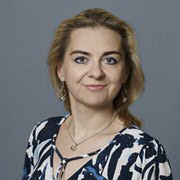Computational Breakthrough: Chiral Crystals Enable Efficient and Long-Distance Spin Signal Transmission
A major breakthrough by the Computational Materials Science Group has uncovered a new way to efficiently generate and transport spin signals over long distances, opening the door to next-generation, magnet-free spintronic devices. Their results were published in Nature Communications on April 30th, 2025.

Spintronics, a field that leverages electron spin rather than charge for data processing, holds immense potential for faster, energy-efficient electronics. However, a long-standing challenge has been the rapid relaxation of spin signals, limiting their transport range. Using advanced theoretical techniques, the research team demonstrated that chiral tellurium crystals naturally give rise to slow “relaxons”—collective spin-wave modes that dramatically slow spin relaxation. This discovery allows for an unprecedented 50% charge-to-spin conversion efficiency while maintaining long spin lifetimes, solving a key hurdle in spintronic technology.
This study, based on the exact solution of the Boltzmann transport equation, highlights the power of computational materials science in uncovering fundamental physical phenomena. By demonstrating how chiral crystals can facilitate efficient, long-range spin transport, this work provides a critical step toward practical, high-performance spintronic devices with applications in data storage, quantum computing, and ultra-low-power electronics.
For more information, contact: Dr. Jagoda Slawinska
More news
-
15 September 2025
Successful visit to the UG by Rector of Institut Teknologi Bandung
